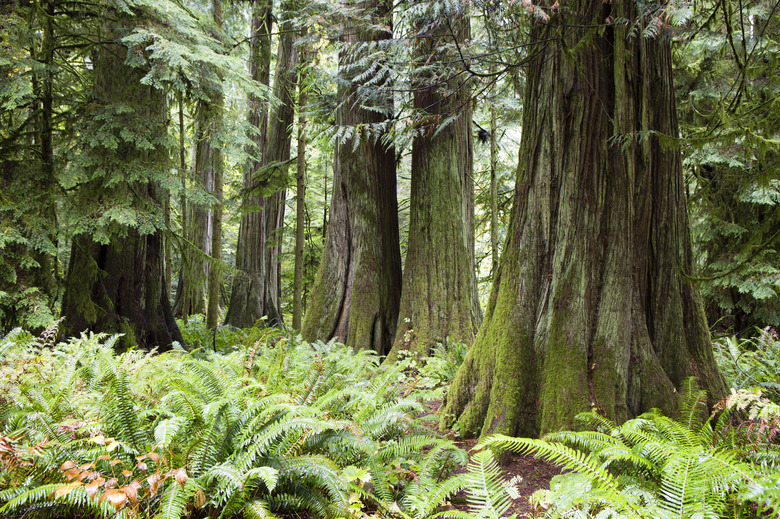Fertilizer For Cedar Trees
We may receive a commission on purchases made from links.
True cedars are magnificent trees, and choosing the right fertilizer for cedar trees is a critical part of helping these giants flourish. Slow-growing, they have evergreen foliage, bold outlines and eventually impressive size, up to 100 feet tall for Cedar of Lebanon (Cedrus libani, USDA zones 5-7). Cedars root deeply into the ground and, because of their significant size, are best suited to parks and large yards. Cedars need little care or maintenance, but they can benefit from periodic fertilizer applications.
Understanding Cedar Types
Understanding Cedar Types
Before you can make decisions about fertilizer for cedar trees on your property, it's important to understand the distinctions among different types. Three true cedars are often used in landscaping. Atlas cedar (Cedrus atlantica), which is a perennial in USDA zones 6 through 9, has short, silvery-blue needles. Cedar of Lebanon is hardy in USDA zones 5 through 7. Deodar cedar (Cedrus deodara), a perennial in USDA zones 7 through 9, has drooping branch tips and a pyramidal shape.
There's also the Eastern red cedar (Juniperus virginiana), which isn't a true cedar and grows as a perennial in USDA plant hardiness zones 2 through 9. The Eastern red cedar is native to the United States and is also slow-growing to 50 feet tall.
True cedars and Eastern red cedar all are efficient at harvesting the nutrients they need from the soil they're planted in because of their efficient, far-reaching root systems. Because they do well on their own, horticulturists often recommend not fertilizing them unless growth is suboptimal. Cedars all respond to fertilizing, but you need a suitable formulation and application rate.
Using Granular Fertilizer
Using Granular Fertilizer
Complete a soil test before you choose a specific fertilizer formulation for your cedar tree. Testing your soil lets you see what nutrients your soil lacks. For established cedars, select a complete fertilizer and apply it in spring before new growth starts. Soil-test recommendations may call for 2 pounds of fertilizer for each inch of trunk diameter, measuring the trunk at waist height. Scatter the granules evenly over the soil surface around the tree, extending it slightly beyond the drip line where the branches end. Water it in thoroughly.
Using Tree Spikes
Using Tree Spikes
To feed your cedar with slow-release nutrients, you can also use evergreen tree fertilizer spikes. Evenly space them in a circle around the tree's drip line, using two spikes for a 1- to 2-inch tree trunk diameter, adding another spike for each additional inch of diameter, always following label recommendations, which vary among products. Drive the spike so it is 2 inches below the soil surface. Apply them in spring and fall, and keep them at least 30 inches away from the tree trunk.
Fertilization Guidelines for Cedars
Fertilization Guidelines for Cedars
Don't use fertilizer on cedar trees too often; it may be necessary to reapply fertilizer only once every two or three years if trees are doing well. Learn to read the cues of your cedar tree. If the tree is growing normally and has foliage and color typical for its species and size, fertilizing probably isn't needed. If trees have slow growth, sparse foliage, an abnormal color or short needles, fertilize them.
Don't confuse stress from dehydration with lack of fertilizer. True cedars need occasional deep watering in hot summer months to thrive, and fertilizing heat-stressed cedars would only make matters worse. On the other hand, fertilize cedars regularly if you want faster growth on young trees, if plants are growing in poor soils or if they need to repair damage.
